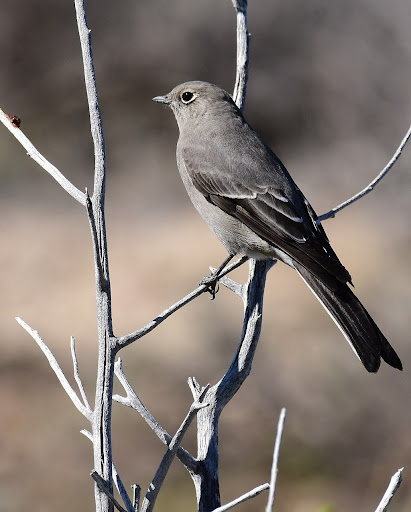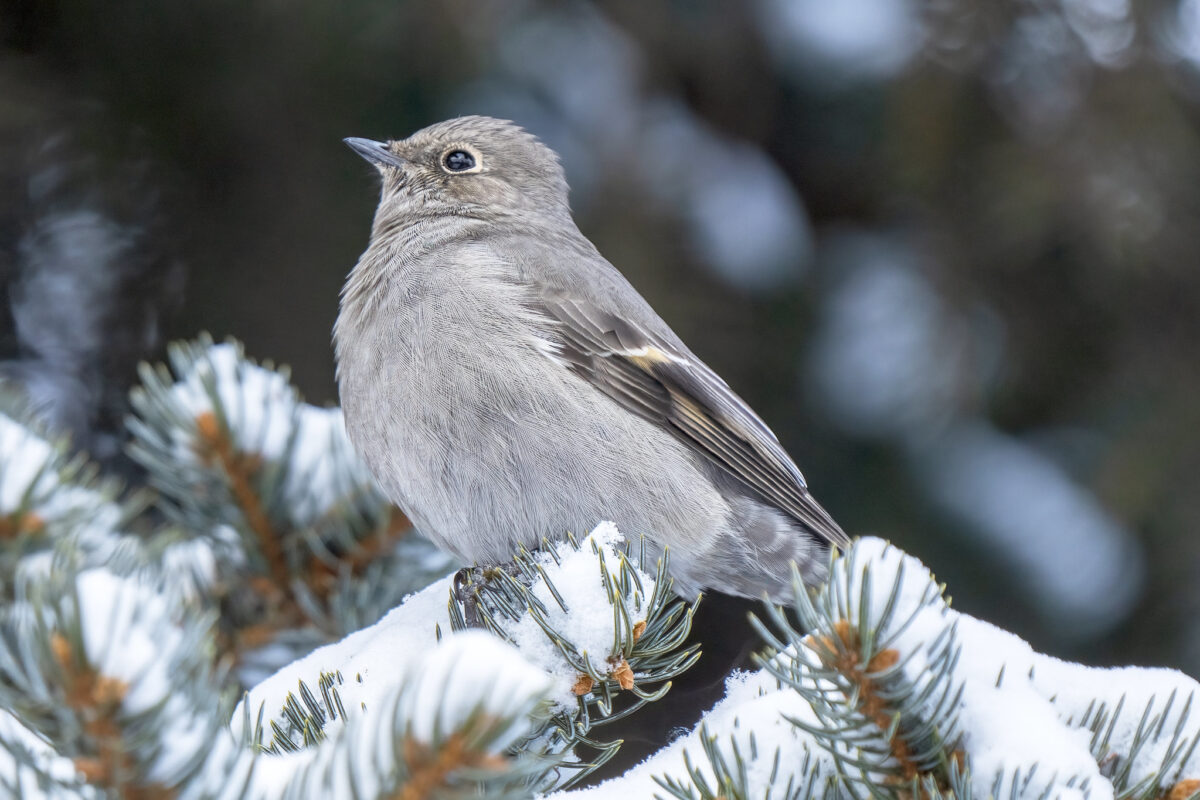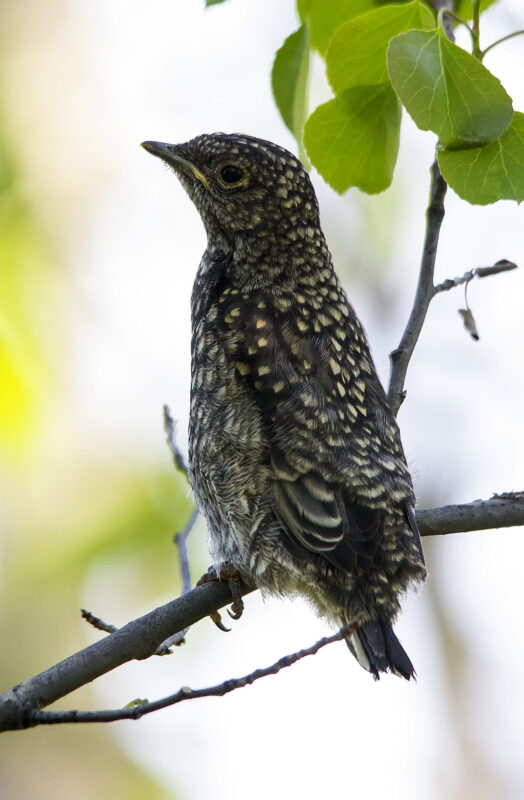By Cathy Warwick
Down by the river in Sandy Beach there lives a couple of Townsend’s Solitaire. The Solitaire belongs to the Thrush family and so it’s no surprise that it looks very similar to a Robin. Same size, same grey body, good posture and big black eyes. It is just missing the big red belly, an easy giveaway. If you take a closer look you will also see that the Solitaires’ eyes have an elegant white ring around them.

(Photo from wikimedia commons, no restrictions.)
These Sandy Beach birds must have found a good patch of Juniper Berries and set up shop around them. The Solitaire loves Juniper Berries, especially in the winter. According to “All About Birds” a Solitaire will eat between 42,000 to 84,000 berries a winter. I’m not sure how they came up with those numbers but at the very least we know it’s a heck of a lot of Juniper berries! They very aggressively defend their berries from all other birds, including Robins and other Solitaires.
Part of their defense is singing their beautiful song. I’m not sure if the ones in Sandy Beach have little competition or what but, unhappily, they are very quiet. This is too bad because the Townsend’s Solitaire has one of the most beautiful bird songs around. If you tried to bring to mind a beautiful birdsong, it would probably sound like this bird. It’s a lot like a Robin but more complex and varied. Maybe if I started conspicuously eating their Juniper Berries they will start singing. It would be worth the bitter taste to hear them.

The ‘Solitaire’ in its name refers to its solitary nature. It’s not sharing those Junipers with a flock of other birds. They prefer to stick it out alone or in a pair. When they nest it is usually in a sheltered hollow on a cliff side. The female bird will use pine needles to build the nest and then line it with grasses and bark, making it soft for the 3 to 5 babies she will have. According to the internet the babies are speckled and rather cute. Of course I’ve never seen a nest or a Townsend Solitaire chick with my own eyes, it’s hard enough to see the adults!

So take a walk down in Sandy Beach, on the west side of the bridge in the trees, to find them and add them to your life list. They like to perch at the top of trees, where they can better protect their Juniper crop.
Sandy Breach please provide location is it in kannanaksis ?
Sandy Beach is on the Elbow River in Calgary, immediately downstream of the Glenmore Dam.
I really enjoyed this commentary on the Townsend’s solitaire. Thanks!
Thank you Ann
Good article Cathy
I’ve had the privilege of hearing them sing at 100 Mile House, BC. Just beautiful! I first came upon one in Harrison Hot Springs, BC in 1972, January. It was defending Holly berries, which grow in the town. I’ve had up to 9 of these migrate through Harrison in early April. I found a nest of this species in a logging road cut bank, up Spuzzum Creek, south of Boston Bar, BC while working for BC Forestry, in 1980. I thought you might like to hear this! I really enjoyed your wonderful article. Thanks for sharing!🪶🦉🌲
You have seen many more than I have! Thanks for sharing
It reminds me very much of an Eastern or Western Bluebird.
Yes their songs are very similar, I haven’t heard many bluebirds. Looking forward to spring!